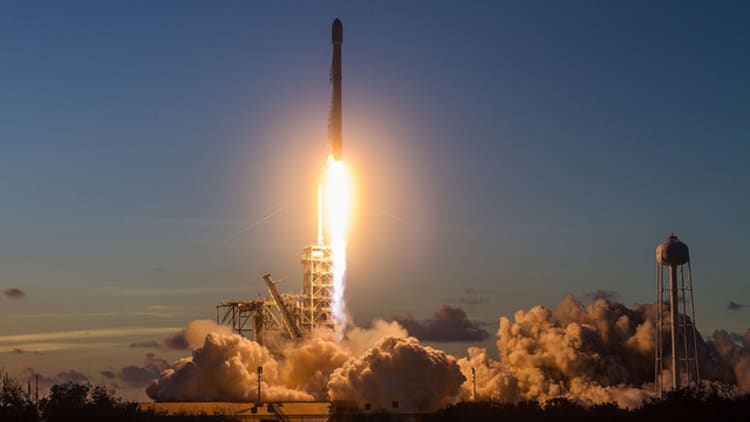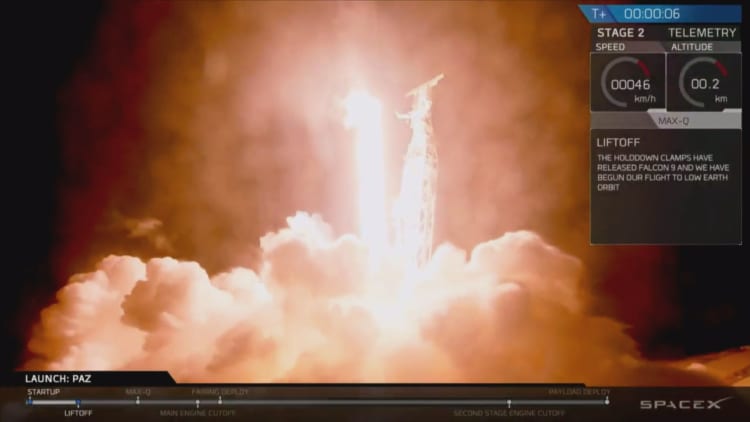
SpaceX took a critical step Thursday toward making one of Elon Musk's dreams a reality: the largest satellite network ever built, bringing high speed internet to billions around the world.
Musk's space company successfully deployed a satellite into low Earth orbit for the Spanish government, which was the primary customer aboard the previously flown Falcon 9 rocket. Tucked alongside the 1½ ton satellite for Spain's military, however, were SpaceX's own, smaller additions.
Known as Microsats 2a and 2b in documentation filed to the Federal Communications Comission, the two satellites are the first built by SpaceX. These craft will gather data to test and demonstrate the viability of SpaceX building a constellation of 4,425 Ka/Ku band low Earth orbit satellites. Musk confirmed Wednesday the inclusion of the two satellites on the launch, saying in a tweet that "if successful" the new satellite network would serve the "least served" around the world.
Starlink – a name SpaceX filed to trademark last year – is an ambition unmatched by any current satellite network. The largest existing constellation is built by Iridium. The company is halfway through launching a constellation of 75 Iridium Next satellites and is set to finish deployment in the next year.
SpaceX will begin launching an initial constellation of 4,425 Ka/Ku band low Earth orbit satellites in 2019, with the system becoming operational once at least 800 satellites are deployed, FCC documents show. The two test satellites will orbit about 700 miles above Earth, in the same range as the eventual constellation.
The space company also attempted to catch the fairing – the bulbous nose cone on top of the rocket — using a high speed boat known as "Mr. Steven." Musk tweeted after the launch the boat missed catching the fairing "by a few hundreds meters," adding that the fairing slowed down enough to land "intact" in the Pacific Ocean.
The boat has a net strung up behind it to capture the fairing and Musk says SpaceX "should be able catch it with slightly bigger chutes to slow down" its descent. Before the launch, Musk noted that the fairing returns to Earth "at about eight times the speed of sound."
"It has onboard thrusters and a guidance system to bring it through the atmosphere intact, then releases a parafoil and our ship with basically a giant catcher's mitt welded on tries to catch it," Musk said, sharing a photo of the boat.
Via Elon Musk's Instagram
Musk shared additional photos from the deck of the boat after the launch. Half of the fairing is seen floating on the waters of the Pacific Ocean, with Musk saying there was "no apparent damage from reentry and splashdown."
Watch: SpaceX launches Falcon 9 to deliver its own satellites for the first time



